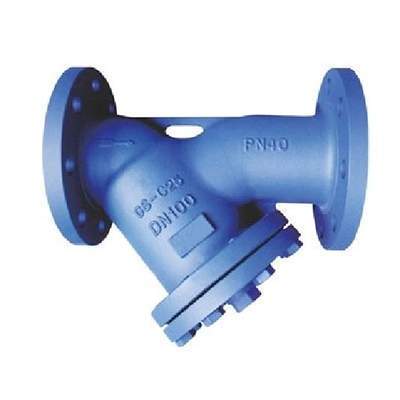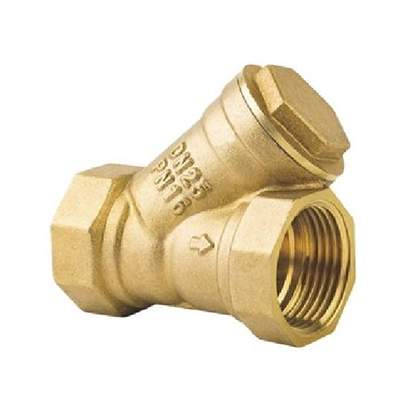Introduction

In the intricate realm of industrial processes, maintaining the cleanliness of fluids is paramount. Contaminants such as dirt, scale, and particles can significantly degrade equipment efficiency, escalate maintenance costs, and even lead to catastrophic failures. To mitigate these risks, engineers and operators rely on a variety of filtration solutions. Among these, the Y type strainer valve has emerged as a versatile and effective tool for safeguarding critical system components.
This comprehensive exploration delves into the realm of Y type strainer valves, unraveling their design, working principles, and the myriad benefits they bestow upon overall system efficiency. We will also scrutinize various factors to consider when selecting the optimal Y-type strainer for a specific application.
Understanding Y Type Strainer Valves
What is a Y Type Strainer Valve?
A Y type strainer valve is a specialized filtration device ingeniously designed to eliminate solid particles from flowing fluids. It comprises a body elegantly shaped like the letter “Y,” adorned with an inlet and outlet port on each side of the “Y.” Nestled within the body lies a perforated basket or screen, acting as a vigilant filter element.
How Does it Work?
As the fluid embarks on its journey into the inlet port, it gracefully traverses the perforated basket. Solid particles, unable to navigate the intricate labyrinth of the basket, become ensnared on its surface. Meanwhile, the purified fluid effortlessly passes through and exits the outlet port, ready to continue its mission.
Benefits of Y Type Strainer Valves
- Unparalleled Fluid Cleanliness: By meticulously removing contaminants, Y-type strainers ensure that only pristine fluid reaches downstream equipment, safeguarding pumps, valves, and other delicate components from wear, tear, and premature failure.
- Enhanced System Efficiency: Clean fluids glide effortlessly through pipes and equipment, reducing pressure drops and minimizing energy consumption. This streamlined flow not only boosts system efficiency but also contributes to significant cost savings.
- Reduced Maintenance Costs: Regular inspection and cleaning of Y-type strainers serve as a proactive measure to prevent costly equipment failures and extend the lifespan of components. By addressing potential issues before they escalate, maintenance costs can be significantly reduced.
- Compact Design: Y-type strainers are renowned for their compact and space-saving design, making them ideal for installations with limited space constraints. Their ease of installation further enhances their appeal.
- Versatility: These versatile valves can be employed with a diverse range of fluids, including water, oil, chemicals, and gases, making them indispensable in various industrial settings.
Factors to Consider When Selecting a Y Type Strainer Valve
- Fluid Characteristics: The nature of the fluid, its viscosity, temperature, and pressure exert a significant influence on the choice of strainer material and mesh size.
- Contaminant Size: The size of the particles to be removed dictates the required mesh size. A careful assessment of the contaminant profile is essential to ensure optimal filtration.
- Flow Rate: The flow rate of the fluid impacts the Y type strainer valve’s capacity and pressure drop. A well-matched strainer can handle the desired flow rate without compromising performance.
- Installation Requirements: The available space, piping configuration, and maintenance accessibility should be carefully considered during the selection process. A strainer that is easily accessible for inspection and cleaning can significantly reduce downtime and maintenance costs.
Materials of Construction
Y type strainer valves are available in a variety of materials, each offering distinct advantages:
- Stainless Steel: Renowned for its exceptional corrosion resistance, stainless steel is a popular choice for a wide range of applications. It can withstand harsh chemical environments and high-temperature fluids.
- Cast Iron: Offering robust strength and durability, cast iron is a cost-effective option for many applications. However, it may be susceptible to corrosion in certain environments.
- Bronze: Known for its excellent corrosion resistance, bronze is often employed in marine and other corrosive environments. It also exhibits good mechanical properties and wear resistance.
Applications of Y Type Strainer Valves
Y type strainer valves find widespread application in numerous industries, including:
- Oil and Gas: Protecting pumps, compressors, and other critical equipment from particulate contamination, ensuring optimal performance and longevity.
- Chemical Processing: Filtering corrosive fluids and preventing equipment damage, safeguarding both the process and the environment.
- Power Generation: Safeguarding boilers, turbines, and condensers from debris, enhancing efficiency and reliability.
- Water Treatment: Removing suspended solids from water supplies, ensuring the delivery of clean and potable water.
Common Applications of Y Type Strainer Valves
| Industry | Typical Applications |
|---|---|
| Oil and Gas | Upstream production, refining, and transportation |
| Chemical Processing | Pharmaceutical manufacturing, petrochemical production |
| Power Generation | Steam generation, cooling water systems |
| Water Treatment | Municipal water supply, industrial wastewater treatment |
Maintenance and Inspection

Regular inspection and cleaning of Y type strainer valves are essential to maintain optimal performance and prevent premature failure. The frequency of maintenance depends on factors such as the type of fluid, flow rate, and contaminant level. A well-maintained strainer can significantly extend its lifespan and reduce the risk of unplanned downtime.
Conclusion
Y type strainer valves are indispensable tools in the arsenal of industrial engineers, playing a pivotal role in maintaining the efficiency and reliability of processes. By meticulously removing contaminants from fluids, these versatile devices safeguard equipment, curtail maintenance costs, and enhance overall system performance. When selecting a Y type strainer valve, a comprehensive evaluation of fluid characteristics, contaminant size, flow rate, and installation requirements is crucial. By making informed decisions, engineers and operators can ensure the optimal performance of their systems.
FAQ
What is the difference between a Y-type strainer and a basket strainer?
Y-type strainers offer a more compact design and lower pressure drop compared to basket strainers.
How often should a Y-type strainer valve be cleaned?
The frequency of cleaning depends on factors such as fluid type, flow rate, and contaminant level. However, regular inspections and cleaning are recommended to maintain optimal performance.
Can a Y-type strainer valve be used with high-temperature fluids?
Yes, Y-type strainers can be used with high-temperature fluids, provided they are constructed from materials that can withstand the elevated temperatures.
What is the pressure drop across a Y-type strainer valve?
The pressure drop across a Y-type strainer valve depends on factors such as the flow rate, fluid viscosity, and strainer design. A well-designed strainer can minimize pressure drop while effectively removing contaminants.
